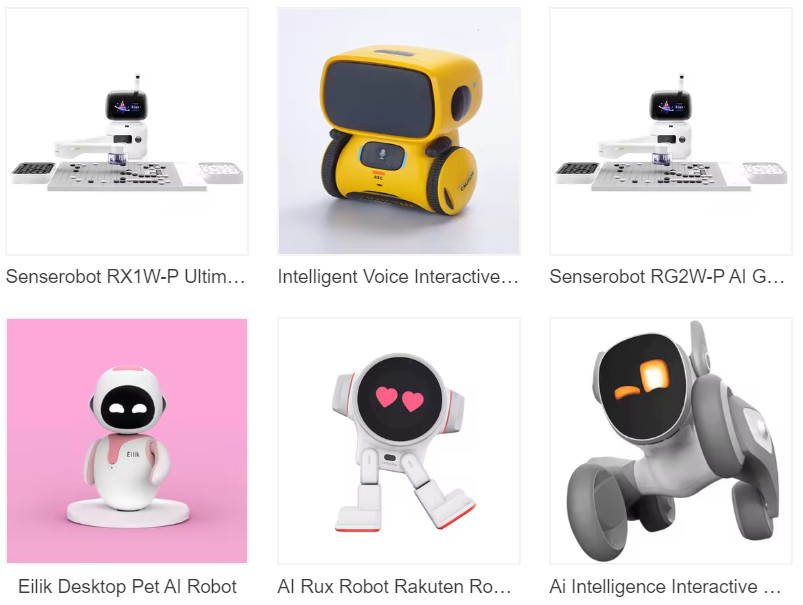Humanoid Robotics Global Competition Accelerates: What Advantages and Challenges Does China Face, and When Will Industry-Level Breakthroughs Arrive
With Tesla's entry, the competition in the humanoid robotics industry has significantly sped up.

On May 5th, Tesla announced the latest progress of its Optimus humanoid robot—it has deployed several robots in a factory to test by completing tasks such as sorting 4680 batteries; its walking speed has increased by more than 30% compared to the end of last year, currently reaching approximately 0.6 meters per second; it can even correct its own mistakes during work.
Tesla CEO Elon Musk revealed that later this year, Optimus will be equipped with new arms with 22 degrees of freedom, "actuators will be almost entirely moved into the forearms, just like the way humans work."
The progress of Optimus can be regarded as a microcosm of the current global competition in humanoid robots.
Previously, on March 13th, OpenAI and Figure launched the general-purpose robot Figure 01; on March 19th, NVIDIA announced the humanoid robot project GR00T; on April 18th, Boston Dynamics announced the electric version of the Atlas humanoid robot released since 2013...
The industry generally believes that the year 2024 will be the inaugural year for embodied intelligence. Embodied intelligence refers to an intelligent system that perceives and acts based on a physical body. It acquires information, understands problems, makes decisions, and realizes actions through the interaction between the agent and the environment, thereby producing intelligent behavior and adaptability. Humanoid robots are the representative products of embodied intelligence.
According to data from the Ministry of Industry and Information Technology's SEDI Research Institute, the scale of China's humanoid robot industry will exceed 20 billion yuan in 2026. The humanoid robot industry will continue to grow rapidly in 2024 and 2025.
China's Advantages in the Global Accelerated Layout: Supply Chain and Scene Landing
OpenAI and Figure launched the general-purpose robot Figure 01
Piero Scarruffi, director of the Silicon Valley Artificial Intelligence Research Institute and author of "A History of Silicon Valley," also mentioned humanoid robots in a recent public speech. He said that he has long been reluctant to put pictures of humanoid robots in his speeches because he has seen many demonstrations of humanoid robots. They can jump and do many other things, but he thinks it is of no use. Now, people have made humanoid robots more realistic.
"In terms of the intelligence of humanoid robots, both China and the United States are actively exploring," Wang He, founder of Galaxy General Robotics and head of the Zhisheng Embodied Intelligence Research Center, said in an interview with The Paper during the 2024 Zhongguancun Forum. The United States has a greater momentum, while many companies in China, including Galaxy General, are at the world's top level in technology.
Wang He believes that manufacturing is China's biggest advantage. Taking the wheeled humanoid robot as an example, the cost of Galaxy General's two-armed wheeled humanoid robot is only about 1/10 of Google's one-armed wheeled humanoid robot. In terms of data recovery, China also has a huge advantage in labor costs.
"China's humanoid robot industry has a significant advantage in supply chain, mass production capability, and scene landing," Gu Jie, founder and CEO of Fourier Intelligence, said in an exclusive interview with The Paper during the 2024 Zhongguancun Forum. "A lot of Tesla's hardware, even the entire automotive industry chain, is in China. The supply chain of humanoid robots is quite close to that of automobiles."
Gu Jie believes that "we have a large number of scenes, such as elderly care and rehabilitation, inspection, and other scenes, which have a huge possibility for the landing application of humanoid robots."
Gu Jie said that humanoid robots are a very good representative of new quality productivity and can lead a new industrial revolution and future trends. "Humanoid robots may become the next generation of intelligent terminals, changing from the original mobile phones to walking mobile phones, to walking large models. Under this trend, a very good carrier is needed. In the future, humanoid robots will be able to meet a large number of general scenarios and bring a significant breakthrough in productivity."
Wang He emphasized: "In this wave of humanoid embodied intelligence, Chinese research institutions and enterprises must be down-to-earth, not to do short-term eye-catching things, and to focus on how to truly generalize. Once the step from '0' to '1' is taken well, the subsequent manufacturing capabilities and continuous data feedback can give China a first-mover advantage, making 'electric people' more successful than 'electric cars.'"
Support policies are introduced frequently, and enterprises aim for industry-level breakthroughs.
In 2023, the Ministry of Industry and Information Technology issued the "Guiding Opinions on the Innovative Development of Humanoid Robots," proposing to initially establish an innovative system for humanoid robots by 2025, to reach an internationally advanced level in whole machine products, to breed and develop a number of new businesses, new models, and new formats, and to reach an internationally advanced level in industrial comprehensive strength by 2027, becoming an important new engine for economic growth and other development goals.
It's not just at the national level, local governments have also been active in recent years.
Universal humanoid robot mother platform "Tiāngōng"
On April 27th, in Beijing Yizhuang, the Beijing Humanoid Robot Innovation Center, jointly established by UBTECH in conjunction with Xiaomi Robot, Beijing Machinery and Electricity, and other industry-leading enterprises and institutions, officially released the self-developed universal humanoid robot mother platform "Tiāngōng," which can achieve a stable running speed of 6km/h. On the same day, at the Zhongguancun Forum, Beijing Haidian District released the "Three-Year Action Plan to Create a National Embodied Intelligence Innovation High Ground (2024-2026)."
Recently, Shanghai has further clarified its support for the development of general large models and vertical large models, actively promoting the integration of large models and embodied intelligence.
Gu Jie said that Shanghai is currently focusing on artificial intelligence, superimposing the original advantages of large models and robots, and has a certain advantage in the development of humanoid robots.
In May 2023, Shandong issued the "Shandong Province Manufacturing Industry Innovation Capability Improvement Three-Year Action Plan (2023-2025)," Hubei issued the "Hubei Province Several Policy Measures for High-Quality Development of the Digital Economy"; in June, Beijing issued the "Beijing City Robot Industry Innovation Development Action Plan (2023-2025)"; in August, Beijing issued the "Beijing City Several Measures to Promote the Innovative Development of the Robot Industry"; in October, Shanghai issued the "Shanghai City Further Promoting the Construction of New Infrastructure Action Plan (2023-2026)," "Shanghai City Promoting the High-Quality Innovative Development of the Intelligent Robot Industry Action Plan (2023-2025)," and "Shanghai City Promoting the Development of the Medical Robot Industry Action Plan (2023-2025)"; in December, Chongqing issued the "Chongqing City AI and Service Robot Industry Cluster High-Quality Development Action Plan (2023-2027)"; in January 2024, Guangdong issued the "Guangdong Province Cultivating Intelligent Robot Strategic Emerging Industry Cluster Action Plan (2023-2025)"; in February, the Anhui Provincial Development and Reform Commission issued the "Anhui Province Future Industry Pilot Zone Construction Plan (Trial)."
Wang He said that the domestic support for emerging industries is very strong, and Galaxy General has also received support from leaders and management units at all levels. It is suggested that in the future, the field of embodied intelligence should increase investment in the head, first make industry-level breakthroughs in the head, and then benefit the entire industry chain suppliers, etc. "The current situation is still very good, and I am also looking forward to a series of policies to support embodied intelligence in the second half of this year, which can help the truly leading companies to get help in this matter."
The Key Milestone to AGI, and the Challenge of Commercialization
According to the "2024 Embodied Intelligence Panorama 1.0" previously released by the China Artificial Intelligence Industry Development Alliance (AIIA), the embodied intelligence industry involves three major sectors: application and investment incubation, technology development and system integration, and infrastructure and raw materials, covering dozens of sub-areas such as family services, education and training, entertainment and leisure, medical care, special operations, low-altitude economy, logistics and transportation, aerospace, basic models and artificial intelligence engines, cloud platforms and data, sensors and detectors, processor chips, wireless communication equipment, involving more than 300 companies.
The AIIA Embodied Intelligence Working Group has also summarized and analyzed the current situation and trends of the upstream, midstream, and downstream of the industry chain.
In terms of the upstream, sensors are shifting from high precision to high robustness; chips will migrate from the cloud to the edge side, and currently, cloud computing is the main application scenario for artificial intelligence chips. In the future, artificial intelligence chips will be integrated into the robot body, giving it edge computing capabilities; algorithms will shift from model-driven to data-driven, and data collection and quality will become a top priority in the future, driving the model to develop in the direction of multimodal fusion; in the field of software and hardware, the current
A total of 1 page 1 data




